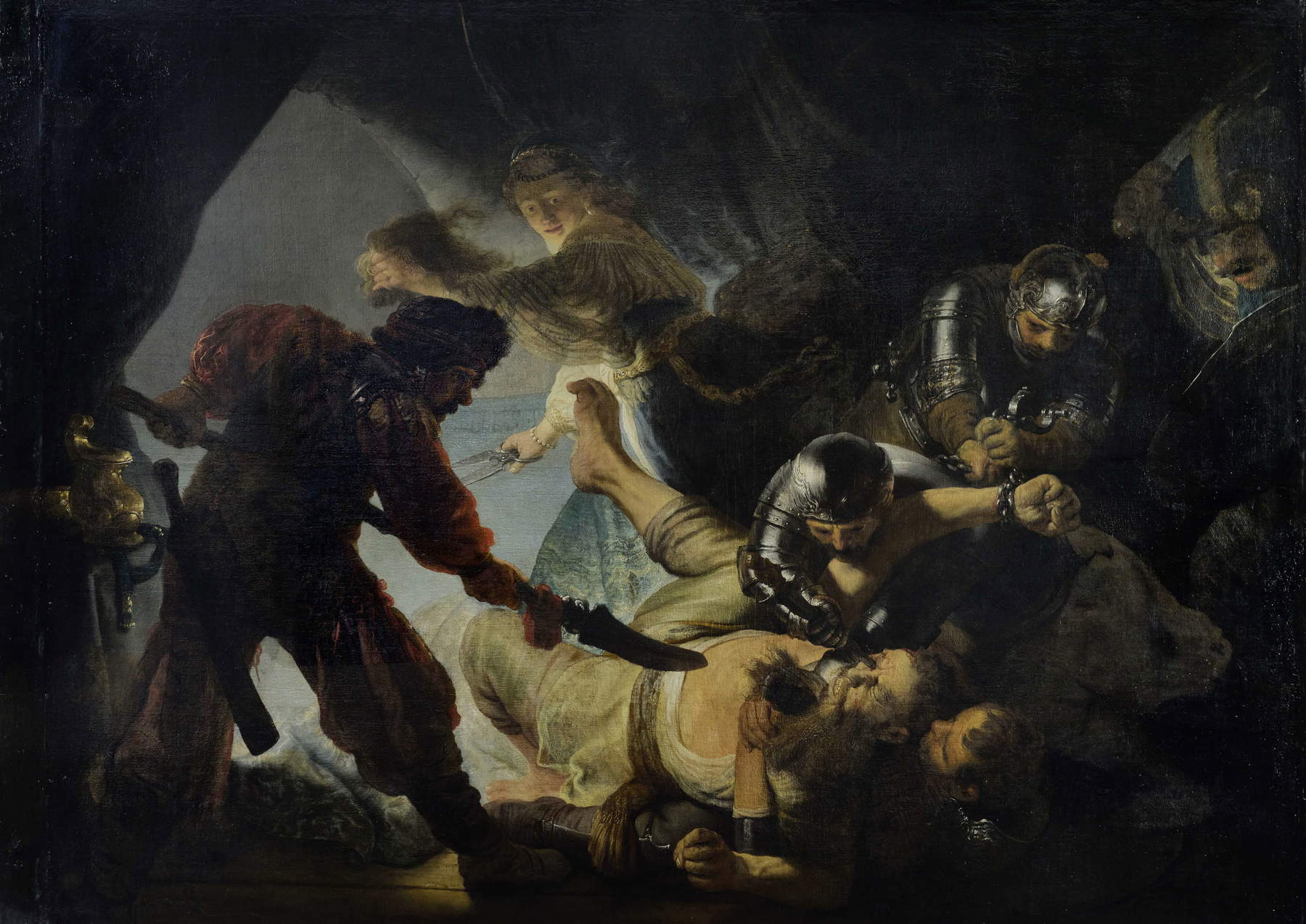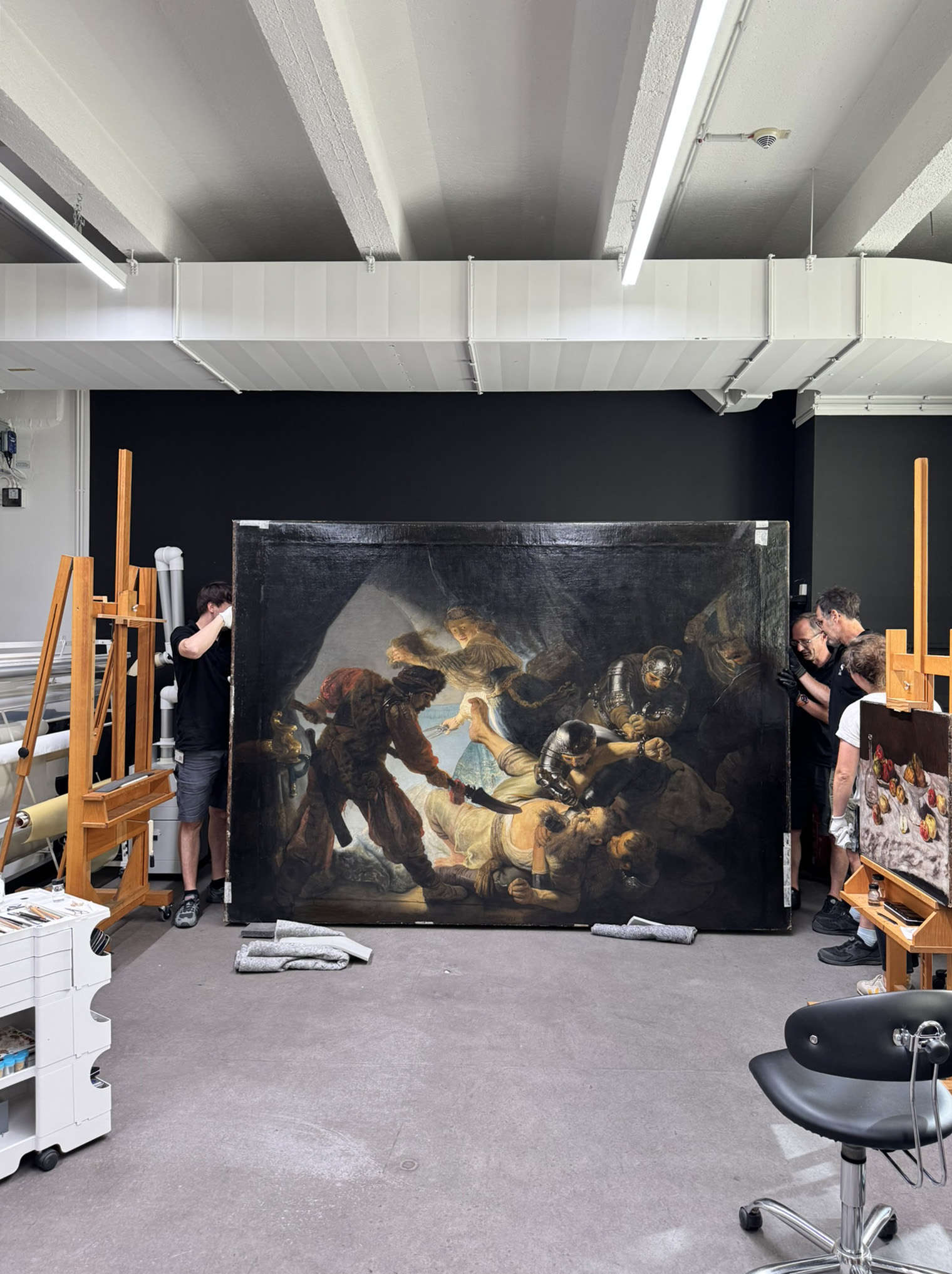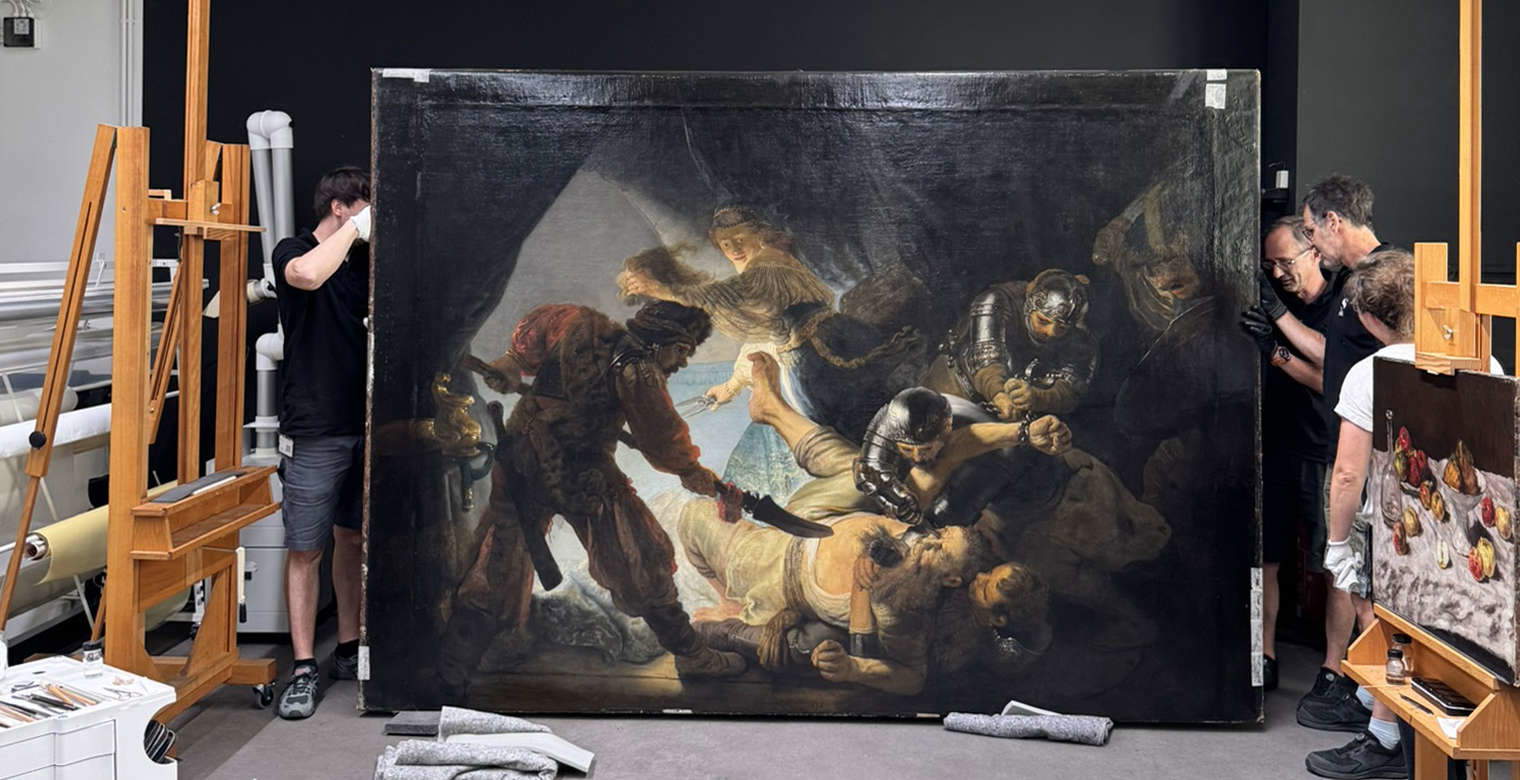The Städel Museum in Frankfurt has announced the start of a major restoration and conservation project of one of the most significant works in its collection: The Blinding of Samson, painted by Rembrandt van Rijn (Leiden, 1606 - Amsterdam, 1669) in 1636. It is a monumental canvas, more than two meters high and more than three meters wide, and for centuries it has been a landmark for the study and understanding of the Dutch Baroque and the narrative and technical skills of the Leiden artist.
The work, which has been the focus of attention since its creation, bears the signs of time and previous restoration campaigns, as well as natural ones due to the aging of pictorial materials. For this reason, the museum has prepared an intervention that will last three to four years and will have a twofold objective: to bring back the painting’s original intensity and to ensure its long-term preservation.
Städel Museum Director Philipp Demandt emphasized the importance of the project, which was made possible thanks to Bank of America ’s support as part of the Art Conservation Project: "TheBlinding of Samson is a masterpiece of international resonance and one of the pivotal works in our collection of 17th-century Dutch paintings. We are extremely grateful to Bank of America for making this much-needed restoration possible. The funding is a vital contribution to the preservation of our cultural heritage and ensures that this extraordinary work can continue to be admired in all its magnificence well into the future."

The decision to initiate the restoration matured as a result of reflections developed in the context of the exhibition Call Me Rembrandt! Creativity and Competition organized between 2021 and 2022, and the related scholarly conference entitled Rembrandt in the Mirror of New Technological Investigations. On that very occasion, new research results on the painter’s technique had been presented, later published in the journal ArtMatters. International Journal for Technical Art History. For Jochen Sander, head of the German, Dutch, and Old Flemish painting collections, the project is a natural continuation of a course of study: “We have opened up new perspectives on Rembrandt’s work and laid the groundwork for further scientific investigations into one of the greatest masterpieces of our Old Master collection.”
Stephan Knobloch, head of the department of art technology and restoration at the Städel, is directing the intervention. The restorer specified that each step will be carefully calibrated to respect the original techniques and materials used by the Dutch master: “Our goal is to restore the painting to its original intensity while ensuring the long-term preservation of its substance. All steps will be carefully calibrated so as not to betray the artist’s intent.”
The work will begin with a series of in-depth technological and scientific investigations. Tools such as radiography, infrared reflectography,ultraviolet and grazing light analysis, microscopy and X-ray microfluorescence will be used. These techniques will provide a precise understanding of Rembrandt’s original technique and the subsequent interventions that affected the canvas. On the basis of the data collected, we will proceed with the consolidation of the support, the removal of non-original materials added in previous restorations, the stabilization of the pictorial layer and a careful recovery of legibility, always in full respect of the artistic intention of the master. A new frame, made on the basis of a historical model, will also give the work back its appropriate external presence.
The intervention does not have as its only objective the aesthetic one. Along with restoring the painting’s visual strength, the measures intend to ensure the long-term preservation of the canvas and offer scholars valuable data for future research. Indeed, the knowledge gained during the process will be made available to the scientific community and will feed into future conservation and restoration projects.

Meanwhile, the public will not be left without the work. While the painting will be in the lab, it will be possible to explore it digitally through the museum’s Digital Collection, which offers high-resolution images accompanied by detailed information on its genesis, visual language and art-historical significance. The museum has also launched a series of dissemination activities related to the project: among them, the four-episode podcast Blinded by Rembrandt, hosted by journalist Michel Abdollahi, which explores not only the painting but also universal issues related to the human condition, and a film made on the occasion of the exhibition Call Me Rembrandt!, which traces the painter’s rise from a young artist in Leiden to a celebrated Amsterdam master.
From an iconographic point of view, The Blinding of Samson represents one of the highest examples of Rembrandt’s history painting. The painting depicts the dramatic moment when Samson, betrayed by Delilah, is overpowered by the Philistines and rendered blind. The dynamic composition, dramatic use of light, and emotional intensity make the work a pinnacle of visual storytelling and painterly sophistication. It is also a testimony to the painter’s extraordinary ability to transpose biblical episodes into images of great theatrical power.
The most recent scientific research results were published by Mareike Gerken and Jochen Sander in their study On the Genesis of The Blinding of Samson: New Technical Findings in Context, which appeared in a special issue of the journal ArtMatters. In this way, the technical investigations already conducted and those that will accompany the restoration offer both new critical perspectives on the work and a solid basis for its future conservation.
The museum also announced that the progress of the restoration will be documented regularly on its social channels and on Städel Stories, allowing visitors to follow closely, albeit from a distance, the stages of a complex process that combines scientific rigor and artistic care. Once completed, the restoration will return to the public a work capable of reaffirming the relevance of great Baroque painting and the centrality of Rembrandt in the panorama of European art history. If the timetable is met, in three to four years the painting will be back on display, with new vitality, in the halls of the Städel Museum.
 |
| Germany, Rembrandt masterpiece from Frankfurt's Städel Museum goes for restoration |
Warning: the translation into English of the original Italian article was created using automatic tools. We undertake to review all articles, but we do not guarantee the total absence of inaccuracies in the translation due to the program. You can find the original by clicking on the ITA button. If you find any mistake,please contact us.